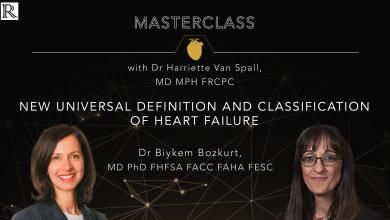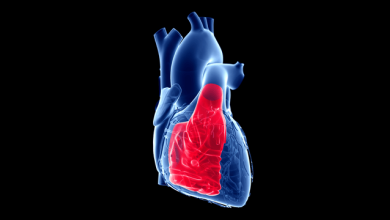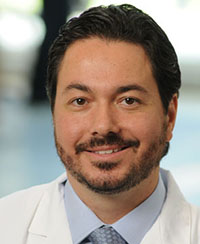Search results
Author(s):
Marc E Wolf
,
Michael G Hennerici
Added:
3 years ago
Aetiological Classification of Stroke
Precise analysis of stroke subtypes is important for clinical treatment decisions and prognostic evaluation of patients leading to adapted individual patient management. The most widely used system of aetiological ischaemic stroke classification is the Trial of Org 10172 in Acute Stroke Treatment (TOAST) classification, proposed in 1993 for an acute stroke…
View more
Author(s):
Harriette Van Spall
,
Biykem Bozkurt
Added:
3 years ago
In the first episode of our Masterclass video series, host, Dr Harriette Van Spall(McMaster University, Hamilton, CA) meets with Dr Biykem Bozkurt (Baylor College of Medicine and Michael E. DeBakey Veterans Affairs Medical Center, Houston, TX, US), chair of the Consensus Statement on the Universal Definition and Classification of Heart Failure released by Heart Failure Society of America, Heart…
View more
Author(s):
Chiara Di Filippo
,
Beatrice Bacchi
,
Carlo Di Mario
Added:
3 years ago
Takotsubo syndrome (TTS) is a transient form of acute heart failure that mimics an acute coronary syndrome (ACS), with comparable acute adverse outcome.1 Many hypotheses have been formulated, but the pathophysiology of TTS is still not fully understood. Recently, it was demonstrated that specific alterations in neurological response and sympathetic activation after emotional stimuli are present…
View more
CCS-AMI: New Classification for Acute MI with Dr Kumar
Author(s):
Ankur Kalra
,
Andreas Kumar
Added:
5 months ago
Podcast Episode
Renato D Lopes
Job title: Professor of Medicine
Author
Author(s):
Giuseppe Rosano
,
Harriette Van Spall
Added:
6 months ago
ESC 23 – Late-Breaker host, Dr Harriette Van Spall (McMaster University, CA) is joined by Prof Giuseppe Rosano (St George’s Hospitals NHS Trust University of London, UK), President of HFA to distil the key messages from the 2023 Focused Update of the 2021 ESC Guidelines for the diagnosis and treatment of acute and chronic heart failure.
Prof Rosano summarises the retained ejection fraction…
View more
Author(s):
Inga Narbute
,
Sanda Jegere
,
Indulis Kumsars
,
et al
Added:
3 years ago
Coronary bifurcation disease is present in up to 15–20 % of lesions undergoing percutaneous coronary intervention (PCI) and remains one of the outstanding challenges of treatment with PCI.1,2 PCI for coronary bifurcations is associated with more procedural complications and higher restenosis and adverse event rates than lesions in the body of the vessel.3–7 The introduction of drug-eluting stents…
View more
Author(s):
Ovidiu Chioncel
Added:
4 years ago
Prof Ovidiu Chioncel (University of Medicine Carol Davilla, Bucuresti, RO) discusses insights from theESC EORP HFA Heart Failure Long Term Registry –Acute heart failure congestion and perfusion status; impact of the clinical classification on in hospital and long-term outcomes.
Filmed on site at HFA 2019 by Radcliffe Cardiology.
Videographer: Mike Knight
Interviewer: Liam O'Neill
View more
Author(s):
Erwin Oechslin
,
Rolf Jenni
Added:
3 years ago
Non-compaction of the myocardium is gaining prominence as a rare, distinct cardiomyopathy characterised by the presence of numerous, excessive prominent trabeculations and deep intertrabecular recesses which communicate with the left ventricular cavity. Two decades of research have identified a new disease - firstly, its morphologic and clinical characteristics were described on clinical…
View more
Author(s):
Erwin Oechslin
,
Rolf Jenni
Added:
3 years ago
Non-compaction of the myocardium is gaining prominence as a rare, distinct cardiomyopathy characterised by the presence of numerous, excessive prominent trabeculations and deep intertrabecular recesses which communicate with the left ventricular cavity. Two decades of research have identified a new disease - firstly, its morphologic and clinical characteristics were described on clinical…
View more















